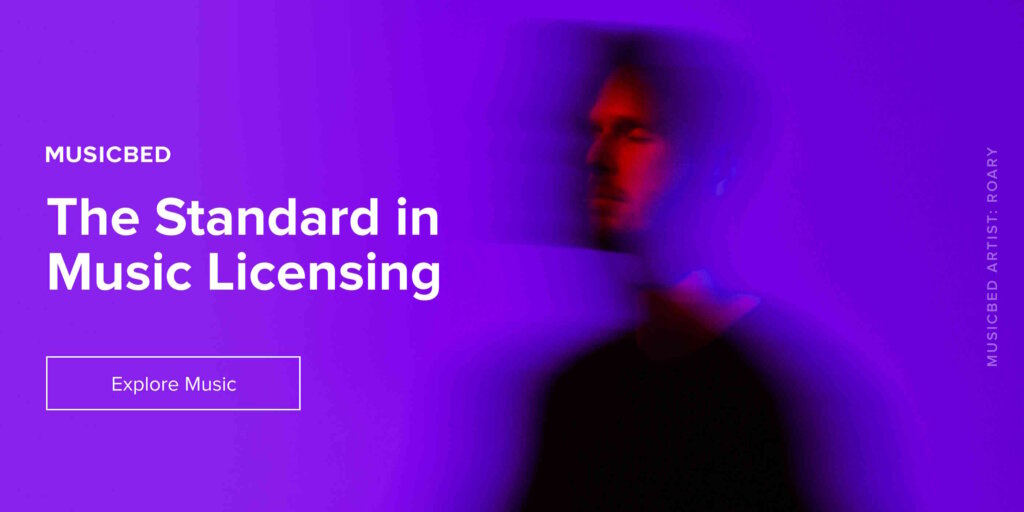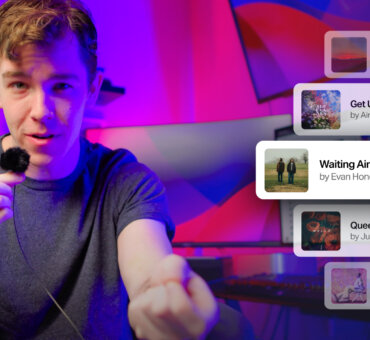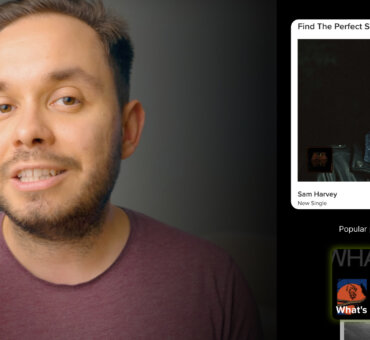If you’re a video creator who uploads to YouTube, then Content ID may just be the most important thing you need to know about. YouTube Content ID is vital for video creators as it automatically detects and manages copyrighted material, protecting intellectual property and enabling rights holders to monetize, block, or track their content.
Understanding what YouTube Content ID is, how it works and how it impacts you as a creator is essential. Without it, the financial ecosystem of YouTube that allows you to get paid simply wouldn’t work.
What is YouTube Content ID?
So, let’s start with the basics. What is Content ID? Whenever you upload a video to YouTube, content ID is the automated system that’s been designed to scan your video and check it for copyrighted content against its database. This database includes all kinds of music, TV shows and other protected content. If you’ve uploaded a video that contains copyrighted content, YouTube will notify the owner of the content and serve you a content ID claim.
Here’s how it impacts you:
Intellectual Property Protection
- Automatic Detection and Management. If a video contains copyrighted content registered in the Content ID system, it will automatically flag it.
- Rights Management. Creators can register their original content (such as music, video clips, and other media) with Content ID. This ensures that if someone else uses their content without permission, it will be detected and managed accordingly.
Monetization Opportunities
- Revenue Sharing. If a video containing copyrighted material is flagged by Content ID, the copyright owner can choose to monetize it by placing ads on the video. This way, the original creator can earn revenue from views on videos that use their content.
- Claim Policies. Content ID allows rights holders to set policies on how they want to handle detected content. They can choose to monetize, block, or track the content, giving creators flexibility in how they manage their intellectual property.
Content Control and Insights
- Blocking Infringing Content. Creators can choose to block videos that use their content, ensuring that their work is not distributed without permission. This is particularly useful for maintaining control over where and how their content is shared.
- Tracking Performance. Content ID provides detailed analytics about how and where their content is being used. This helps creators understand the reach and impact of their content, even when it’s used by other channels.
Legal Compliance and Fair Use
- DMCA Compliance. Content ID helps YouTube comply with the Digital Millennium Copyright Act (DMCA) by automatically identifying and managing copyrighted content. This system helps reduce the burden of issuing manual DMCA takedown notices.
- Fair Use Considerations. While Content ID automatically flags content, it doesn’t make legal determinations about fair use. Creators have the option to dispute claims if they believe their use of content falls under fair use. This process provides a mechanism for resolving disputes between content users and rights holders.
Creative Ecosystem Support
- Encouraging Original Content. By providing a system that protects and monetizes original content, Content ID encourages creators to produce more high-quality, original work. This support helps sustain the creative ecosystem on YouTube.
- Deterrence of Unauthorized Use. The presence of Content ID deters unauthorized use of copyrighted material, as potential infringers know their content will likely be flagged and subject to the copyright owner’s policies.
How does YouTube Content ID work?
Wondering how content ID works? It’s pretty simple. First of all, content owners (music artists, broadcasters etc) provide YouTube with audio or visual reference files that identify their works. The content ID database then creates a unique “fingerprint” from these files, which are then kept on the database. Whenever there’s a new upload, it’s automatically scanned for these fingerprints to see if there are any matches. Fittingly, YouTube made a solid informational video on this.
Eligibility for Using Content ID
In theory, anyone is eligible for using Content ID, providing you own exclusive rights to a substantial body of original material that is frequently uploaded to YouTube. According to parent company Google, “content ID eligibility is based on various criteria. This criteria includes whether the copyright owner’s content can be claimed through Content ID and their demonstrated need. Copyright owners have to give evidence of the copyrighted content for which they control exclusive rights.”
They note that some common examples of items that may not be exclusive to individuals include:
- Mashups, “best of”s, compilations, and remixes of other works
- Video gameplay, software visuals, trailers
- Unlicensed music and video
- Music or video that was licensed, but without exclusivity
- Recordings of performances (including concerts, events, speeches, shows)
If a copyright owner is approved for Content ID, they’ll have to complete an agreement. This agreement will explicitly state that only content with exclusive rights can be used for reference. Also, they’ll need to give the geographic locations of exclusive ownership, if not worldwide.
What types of content are protected?
Any content uploaded to YouTube is eligible, but YouTube explicitly states that “you’re responsible for avoiding incorrect results, such as claims that result from misidentified content or claims that interfere with authorized uses of content.” So, you need to do your homework.
You must have exclusive rights to the material in the reference file for the territories where you claim ownership. The following examples are ineligible for use in or as a reference:
- Content licensed non-exclusively from a third party
- Content released under Creative Commons or similar free of charge/open licenses
- Public domain footage, recordings, or compositions
- Clips from other sources used under fair use principles
- Video gameplay footage (by other than the game’s publisher)

How Musicbed utilizes Content ID
Using the Content ID system, Musicbed has created SyncID – a Content ID clearance system offered exclusively to our subscribers. SyncID provides a smooth, streamlined process to clear videos of claims and allows you to monetize your videos.
How it works
Whenever you upload a video to YouTube, the content ID system will kick in and begin to scan. Meanwhile, our own SyncID system carries out its own validation process. If your channel and song is included in your subscription, then any content ID claims are released immediately and automatically. This process often happens within a matter of seconds. In fact, SyncID is so fast that the claim has often already been released before the content creator receives an email from YouTube about the copyright claim.
Managing Disputes
So, what happens when you receive a YouTube content ID claim?
As the copyright owner, you’ll be notified and given the following options:
- You can block the video that matches your content.
- You can monetize the video using your content.
- You can track the viewer data from the video to get detailed analytics, including countries where your content is popular.
Meanwhile, as the creator who’s received the content ID claim, you have the following options:
- Edit the content. YouTube now provides a great toolset to edit your video without needing to upload a new one. This is very useful, particularly if you’ve already racked up a lot of metrics on the video in question and don’t want to lose those views and engagement. Using YouTube Studio, you can trim out the segment of the video with the claim against it, replace the song in question or even mute that part of the video.
- Dispute a content ID claim. If you genuinely believe there’s been a mistake and you have a right to use the music or footage in question, you can dispute your claim. This then gives the rightsholder a choice to either release the claim, or reinstate it.
- Do nothing. Sometimes, this may well be the easiest answer. If you don’t mind not monetizing the content, and don’t mind if it doesn’t get shown in certain obscure countries, then you have the luxury of doing nothing and accepting the content ID claim as it is!
- If it’s a track you downloaded from Musicbed and you receive an erroneous claim, you can reach out to us directly and we’ll resolve the issue for you immediately.
Limitations of Content ID
While YouTube Content ID is an amazingly powerful tool for managing and protecting copyrighted content, it does have some notable limitations and frustrations.
False Positives
Content ID can sometimes incorrectly flag videos, identifying content as infringing when it is not. This can happen due to similar audio or visual content that is not actually a match. This can result in legitimate content being demonetized or blocked erroneously.
Fair Use Challenges
Content ID does not inherently recognize or account for fair use, which is a legal doctrine allowing limited use of copyrighted material without permission for purposes such as commentary, criticism or parody. Users must dispute claims manually if they believe their use falls under fair use, leading to potential delays and complications.
Limited Scope for Small Creators
Content ID is primarily accessible to larger content creators and media companies. Smaller creators or those without significant resources may find it difficult to gain access to the Content ID system initially, limiting their ability to protect and monetize their content effectively.
Dispute Resolution Process
The dispute resolution process can be lengthy and complex, often favoring larger rights holders. Small creators might find it challenging to navigate disputes and appeals, potentially leading to unjustified claims remaining in place.
Monetization and Control Restrictions
In some cases, Content ID claimants might choose to monetize the content rather than block it, which could mean that the original uploader’s video runs ads benefiting the claimant instead of being taken down. This can be frustrating for content creators who prefer to have unauthorized use blocked entirely.
Evolving Technology and Adaptation
As technology evolves, so do the methods for altering content to bypass Content ID. Users may change pitches, speeds, or use filters to evade detection, making it a continuous challenge for Content ID to keep up with new evasion techniques.
Global Compliance and Regional Issues
Content ID must operate within the complex landscape of global copyright laws, which can vary significantly between regions. This can lead to inconsistencies in how content is managed and enforced across different countries.

Impact on Viewer Experience
Naturally, YouTube Content ID is designed to be as seamless and smooth as possible. However, there are certain ways it can impact viewers.
- Content Availability. Viewers may find some videos blocked or unavailable in their region due to Content ID claims.
- Advertisements. Content ID claims can result in more advertisements on videos, affecting the viewing experience.
- Video Muting. Content ID might cause the audio of a video to be muted if it contains copyrighted music or sound.
- Content Modifications. Creators might alter their content, such as changing the pitch of music or adding filters, to avoid Content ID claims, impacting content quality.
- Content Removal. Content ID claims can lead to the removal of videos from the platform, depriving viewers of access.
- Disrupted Viewing. Videos under dispute due to Content ID claims may be temporarily unavailable or otherwise affected, disrupting viewing.
- Educational and Fair Use Content. Content relying on fair use might be mistakenly flagged and restricted, limiting access to educational and critical material.

Alternatives to YouTube Content ID
Although it’s the most prominent and most well-known, there are actually a lot of alternatives to the Content ID system out there.
Other Platforms with Content ID Systems
- Facebook Rights Manager. Similar to YouTube Content ID, Facebook Rights Manager helps content creators manage and protect their copyrighted content across Facebook and Instagram by identifying and controlling unauthorized use.
- Vimeo. Vimeo offers a copyright protection service where creators can issue Digital Millennium Copyright Act (DMCA) takedown notices to remove infringing content.
Third-Party Services
- Audible Magic. This service provides content identification and copyright management for various types of media, including music and video, used by platforms like SoundCloud and Twitch.
- Pex. Pex offers a comprehensive rights management service that monitors and protects content across numerous platforms, providing detailed analytics and reporting.
Digital Rights Management (DRM)
- Widevine (by Google). Used by many streaming services, Widevine provides content protection for video and audio by encrypting media and managing licenses to prevent unauthorized access.
- FairPlay (by Apple). Apple’s DRM technology protects content distributed through its platforms, such as iTunes and Apple Music, ensuring that only authorized users can access the media.
DMCA Takedown Notices
Manual Enforcement. Creators can manually issue DMCA takedown notices to platforms hosting infringing content. While more labor-intensive, this method is widely recognized and legally enforceable.
Blockchain Technology
There’s a lot of development with blockchain technology, creating a decentralized way to register and track ownership of digital content, helping to prevent unauthorized use and ensuring transparent proof of ownership. Users on the blockchain can timestamp and verify the ownership of digital media, allowing creators to securely register their work and track its usage across the internet.
Content Protection Services
- ContentArmor. Specializes in forensic watermarking, enabling content owners to trace the source of unauthorized distribution of their video content.
- Vobile. Offers content identification and management services that help creators and rights holders protect their media across various platforms.
Conclusion
So, that’s everything you need to know about the world of YouTube Content ID. Overall, it’s a fantastic system that’s designed to protect you, the video creator and provide secure and stable opportunities to monetize. Understanding it enables you to make more informed, better decisions about what and how you upload, as well as how to navigate various copyright scenarios.






















































































